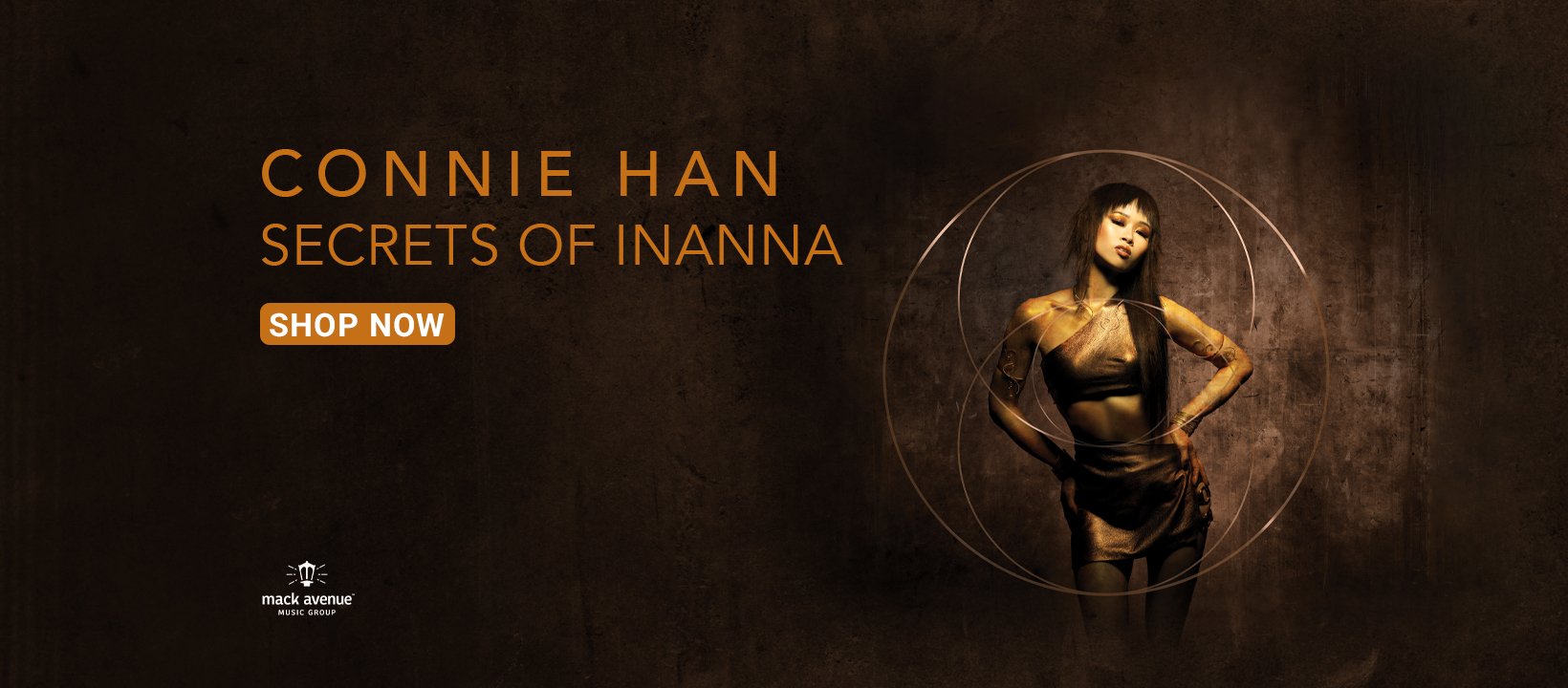"Pianist Connie Han helps revitalize something that jazz aficionados have been into for a while, but for a fresh generation she makes something new that has been defining the jazz language for several decades. If anything, she breathes new life into the Young Lions phenomenon that was jazz’s hallmark in the 80’s and 90’s. A bit of background: in 1976 Herbie Hancock played a career retrospective concert at the Newport Jazz Festival where he had played in contexts he hadn’t in years. At the time, Hancock was knee deep in his forays into funk and disco, and although he never abandoned the acoustic piano during that entire period, his forays into straight ahead jazz were not as plentiful. At this concert Hancock reunited with his band mates from the Miles Davis Quintet: saxophonist Wayne Shorter, bassist Ron Carter, and Tony Williams on drums with Freddie Hubbard replacing the retired Davis on trumpet. The concert and the resultant album, the two LP V.S.O.P. (Columbia, 1976) lead the jazz media to make the bizarre declaration (with hindsight) that acoustic jazz had returned. Acoustic jazz had never died, it just became less popular amidst the countless jazz-rock and jazz-funk classics from artists like Hancock, Chick Corea, Return to Forever, Billy Cobham and Weather Report that were being churned out at a rapid pace. Labels such as ECM were recording cutting edge acoustic music, and labels such as Xanadu, Pablo and Concord catered to mainstream jazz lovers that cherished hard swinging music. Woody Shaw was recording some of his strongest music at Columbia, and Dexter Gordon experienced a mid career renaissance in the United States.
Han’s Mack Avenue debut Crime Zone featuring the astonishing Los Angeles born 22 year old pianist stylistically comes from the period described above, and the “young lions” era of jazz that defined the 80’s and 90’s. The Young Lions movement was a heavily marketed, major label driven focus on acoustic jazz marked sentiment that young black musicians were eager to get back to the sound prevalent before the stylistic and technological advances that characterized the growth of jazz in the 70’s. The poster children were trumpeter Wynton Marsalis, and saxophonist brother Branford who had grown up in New Orleans and logged time as members of Art Blakey’s Jazz Messengers, and through their own quintet developed a very specific dialect rooted in the Miles Davis Quintet of 1963-68 but with particular musical details that could have only happened after the 70’s as pianist Ethan Iverson noted in his article The J Word. The Marsalis group developed a telepathic rapport within the rhythm section of the late Kenny Kirkland on piano, bassist Charnett Moffett and drummer Jeff “Tain” Watts where carefully calculated metric shifts would occur on a dime on the classic Black Codes From The Underground (Columbia, 1985) with unusual twists, such as a single measure of ¾ on “Delfeayo’s Dilemma”. They would develop a language versed in these devices and also in a style of tune called “burnout” rooted in mid 60’s John Coltrane that explored tonality and metric shifts to the breaking point. This language would influence contemporaries such as Kenny Garrett, Mulgrew Miller, Ralph Peterson, Wallace Roney and Terence Blanchard, and would extend to the next generation including Joshua Redman, Christian McBride and the late Roy Hargrove.
The pianist extends this narrative on Crime Zone featuring longtime Blanchard associate Walter Smith III guesting on tenor saxophone for several selections alongside her working trio of bassist Edwin Livingston, and drummer/co writer/producer Bill Wysaske. She also embodies a prodigious explosive quality that announced several pianists to the scene in the last two decades like Eldar Djangirov, Hiromi Uehara and most recently this decade, teenage phenom Joey Alexander. All of these pianists displayed the influences of Oscar Peterson, Herbie Hancock, Chick Corea, McCoy Tyner and Keith Jarrett, but Han adds an additional wrinkle: while her storming left hand suggests Tyner in the use of quartal harmony, she draws heavily on the influences of the late Kenny Kirkland and perhaps the most imitated pianist of the 80’s and 90’s in mainstream jazz, the late Mulgrew Miller. In the narrow, linear historical narrative of jazz, the contributions of these men are valued heavily amongst their peers as adding to the the language of jazz piano, but historically are not weighed as heavily vs. those of Hines, Garner, Powell, Tyner, Hancock, Corea or Jarrett. Han combines these off the beaten path influences into an intriguing whole. "
Read the full review here.
